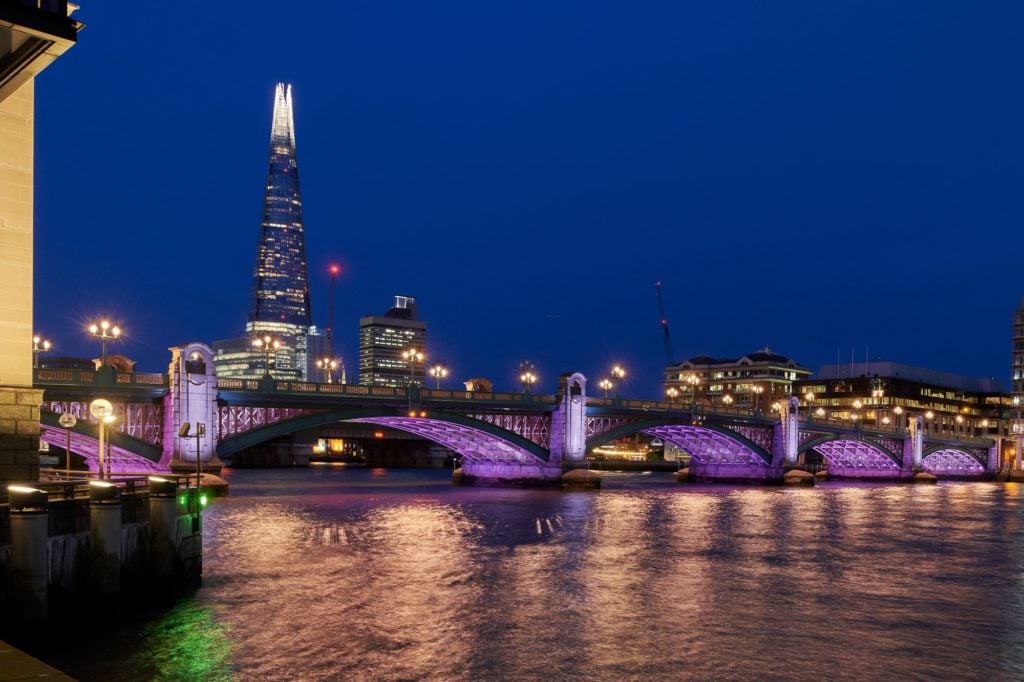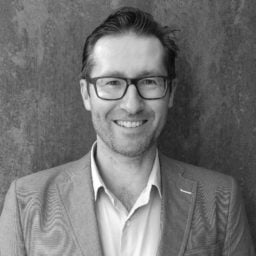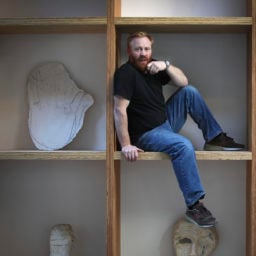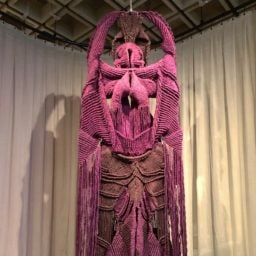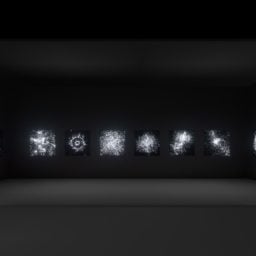The New York-based artist Leo Villareal has been working a lot of hard day’s nights in London. After dusk, he has been setting up shop along the River Thames to fine-tune four famous bridges ahead of the launch of the first phase of a long-term light installation, which went live last night.
Illuminated River, a multimillion-dollar public art project due to last a decade, will eventually encompass 15 bridges. Each one has an average budget of around $3.7 million, including maintenance through 2029.
Unlike Monet, who famously painted the Thames on canvas from a balcony of the Savoy Hotel, Villareal has had to get as close as possible to the city’s most famous crossing points. And in lieu of a paintbrush, he uses software and LED lights, which, once in place, have to be carefully sequenced via a laptop en plein air.
The Bay Lights, Villareal’s 2008 transformation of the San Francisco-Oakland Bay Bridge, which is now a permanent installation, has stood him in relatively good stead to tackle the bridges across the Thames. But nothing could have truly prepared him for the scale of the project. “I have worked with one really large bridge—1.8 miles long—but this was a whole other challenge,” the artist tells artnet News.
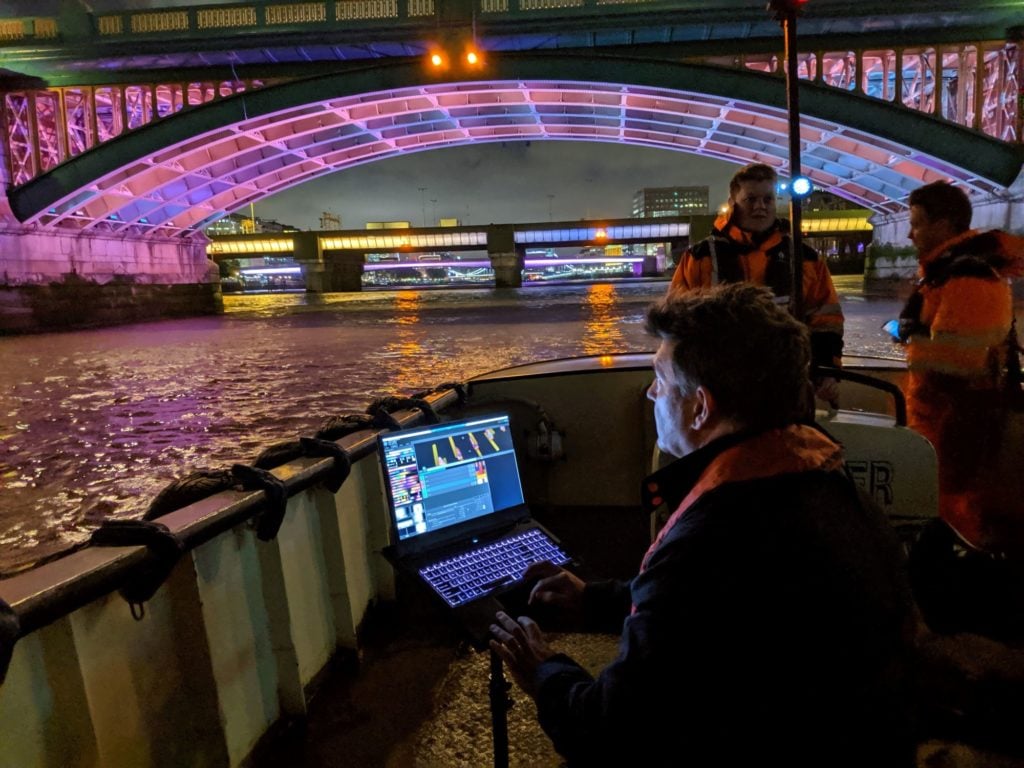
Leo Villareal working on Illuminated River. Copyright Illuminated River.
A Labor of Love
It has been a long journey. But after numerous consultations with concerned residents, extended negotiations with various river authorities, the securing of 30 planning permissions, and consent from 18 landmark buildings, the testing and preparation is finally over.
The artist won the international competition to transform the city’s most famous bridges back in 2016 with the London-based architects Lifschutz Davidson Sandilands. They were in good company: Diller Scofidio + Renfro made the shortlist, as did a team led by starchitect David Adjaye. He had signed up 17 artists, including Doug Aitken, Larry Bell, and Chris Ofili, for his ultimately unsuccessful bid.
“As soon as I heard about the competition, I immediately got the day flight, came to the Thames, and started walking along the river,” Villareal says. He now knows its crossings and tidal currents better than many Londoners. One of the biggest challenges has been animating the structures in a way that will stand the test of time while using electricity as frugally as possible. (The Illuminated River project replaces out-of-date and inefficient lighting.)
“We are using resources, so there is a big responsibility,” he says. “The Bay Lights is on from dusk until dawn, and it only uses $30 a night of electricity. That’s 25,000 lights.” To keep energy use under control, the illumination of the first four crossings—London Bridge, Cannon Street, Southwark, and the Millennium Bridge outside Tate Modern—will be turned off at 2 a.m.
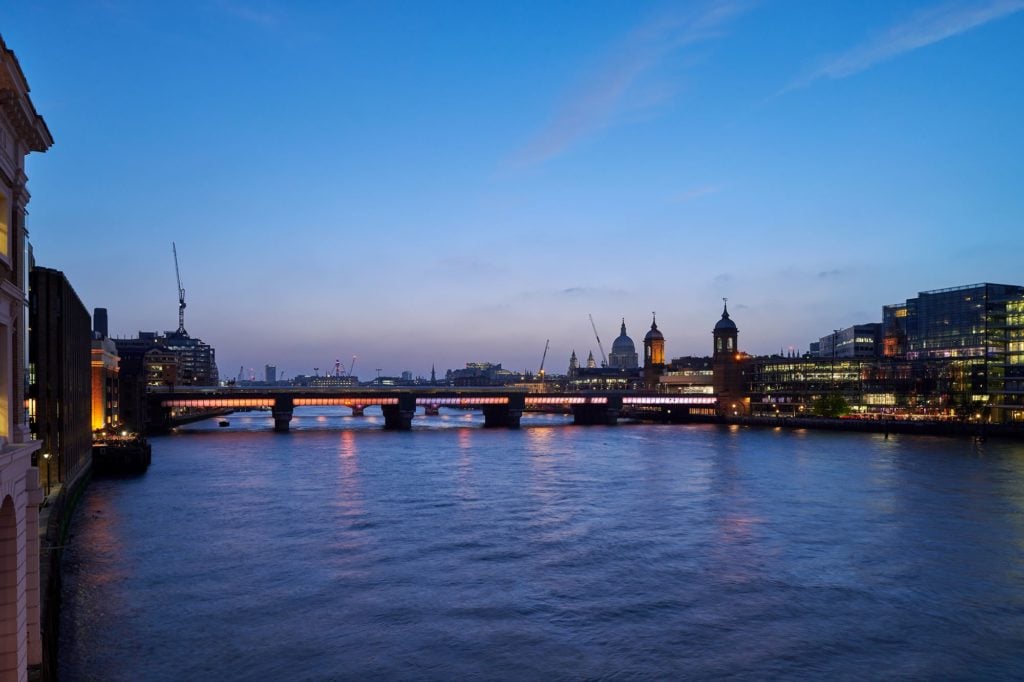
Illuminated River, Cannon Street Bridge. Copyright James Newton.
Unlike the many over-lit buildings on the banks of the Thames, Villareal has used a subtle palette of colors for his dynamic illuminations. “It’s very blended,” he explains. “We are using an amber LED that adds to the golden richness of the color, which is hard to describe and impossible to capture with a camera.” He also avoided primary colors that could interfere with safety lights on the river.
The brainchild of the philanthropist Hannah Rothschild, Illuminated River is funded by her family’s foundation together with contributions from Lisbet Rausing’s and Len Blavatnik’s charities. A spokeswoman for the project says that less than two percent of the budget has come from public funds.
From Burning Man to London Bridge
Villareal has been creating sculptural works with software and light since the mid-1990s. His “epiphany” took place at an early Burning Man festival when he created a humble beacon so that he could find his way back to his trailer in the Nevada desert at night. Sixteen strobe lights operated on a binary system. “The small amount of information went to the lowest level that you can go to, but the artwork had a sense that you were communicating,” he says.
Born in New Mexico in 1967, Villareal grew up in El Paso, Texas. He studied art at Yale before heading to New York University, attracted by its graduate program in interactive telecommunications. A summer internship in the heart of Silicon Valley led to an extended stay in San Francisco. He joined the late Microsoft billionaire and art collector Paul Allen’s tech incubator, Interval Research, in Palo Alto. It was a formative experience. “The web was brand new. The guys from Google would come over,” he recalls. “The seeds for The Bay Lights come from my time with Paul Allen.”
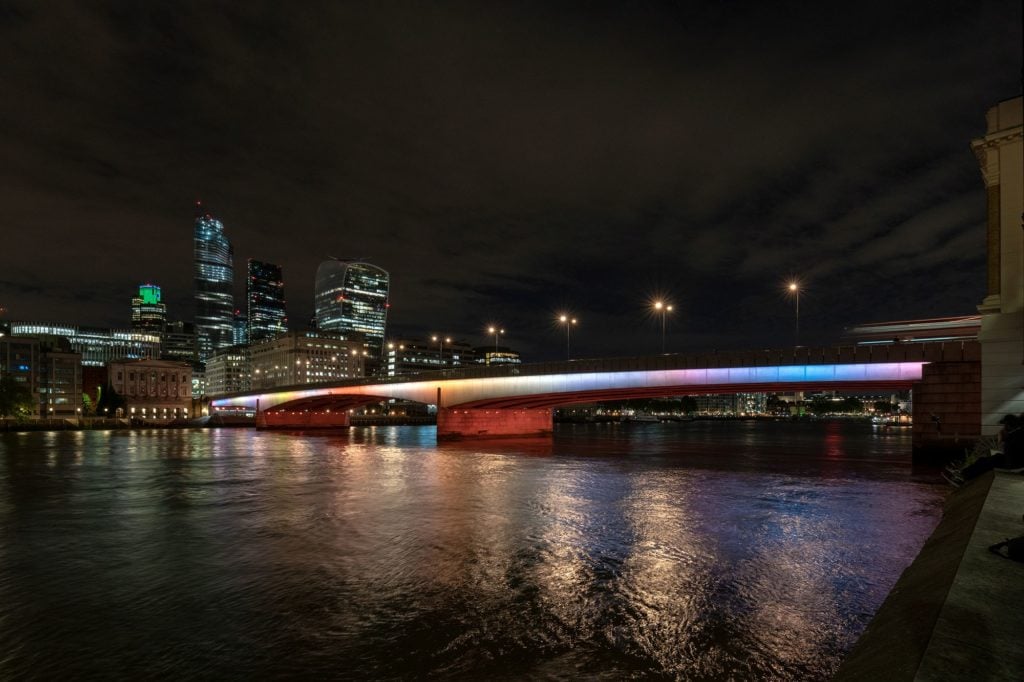
Illuminated River London Bridge. Copyright James Newton.
What Lies Ahead
Despite the excitement of working with visionary tech and creative people, the energy of New York proved irresistible for Villareal. After a spell commuting between the West and East Coast, he set up his studio in Chelsea, where he stayed for 15 years before moving to a larger space in Brooklyn. The speed of technological change in that time has been remarkable. “It is a golden age for artists to manipulate these new tools,” Villareal says. “Who knows what will come of it? It is a really heady moment.”
This fall, he will have a solo show at Pace’s London space, which will show what he can do on a smaller scale, inside a white cube.
So far, he is best known for his monumental works in urban centers that activate existing structures. Could he ever see himself heading out into the desert to create a work there? He returns to Burning Man ever year, after all. The artist reveals that Marfa, Texas, occupies a special place in his heart.
“[Donald Judd] had tea with my grandmother,” Villareal says. “I was studying at Yale at the time and she said there was this artist who had moved to Marfa.” He calls it a “collision of history,” as his family has been cattle ranching in the remote part of West Texas since 1880. “She didn’t know anything about contemporary art but she knew it was good for Marfa.”
He recalls with fondness Judd’s open-house parties with “big bonfires and bagpipes.”
Abstract artists of the 20th century, ranging from Judd to James Turrell, Robert Irwin, and Mark Rothko, have been influential for the artist’s large-scale works, such as The Bay Lights, Illuminated River, and Multiverse (2008), his transformation of I.M. Pei’s walkway at the National Gallery of Art in Washington, DC. “I definitely think of myself as a sculptor, although there are some painterly aspects of what I do,” Villareal says. “Taking light away,” he notes, is just as important as adding it.
